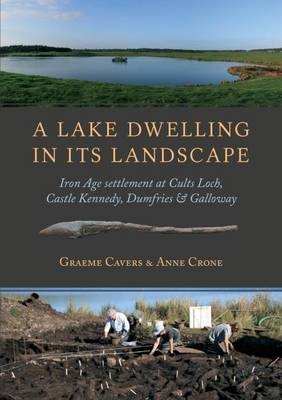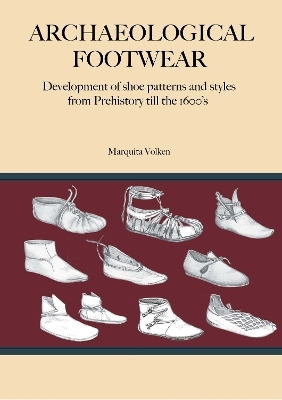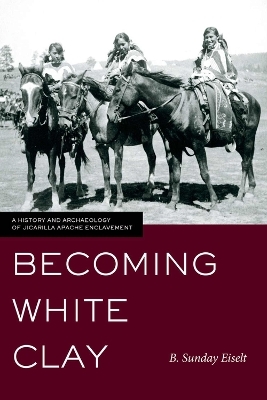
A Lake Dwelling in Its Landscape
Oxbow Books (Verlag)
978-1-78570-373-7 (ISBN)
Cults Loch, at Castle Kennedy in Dumfries & Galloway, Scotland, lies within a landscape rich in prehistoric cropmark sites and within the loch itself are two crannogs, one of which has been the focus of this study. A palisaded enclosure and a promontory fort on the shores of the loch have also been excavated. The Cults Loch crannog is only the second prehistoric site in Scotland to be dated by dendrochronology and analysis has revealed the very short duration of activity on the crannog in the middle of the 5th century BC. Bayesian analysis of the dating evidence from all the excavated sites has yielded a chronological sequence which suggests a dynamic and sequential settlement pattern across the landscape. The implications of this sequence for later prehistoric settlement throughout south-west Scotland are explored. The Cults Loch Landscape Project arose out of the Scottish Wetland Archaeology Programme (SWAP), the objective of which is to fully integrate the wetland archaeological resource of Scotland into the more mainstream narratives of ‘dryland’ archaeology. The Cults Loch project has sought to bridge this apparent divide between ‘wetland’ and ‘dryland’ by focusing on a wetland site, the crannog, which lies at the centre of a prehistoric landscape, rather than being peripheral to it. Thus, the wealth of well-preserved evidence from the crannog, particularly the rich ecofactual assemblages, as well as the higher chronological resolution possible through the dendro-dating of waterlogged timbers, are brought to bear on our understanding of the evidence from the cropmark sites around the loch. The role and function of crannogs are also explored via the relationship between the crannog in Cults Loch and its social and physical landscape.
Graeme Cavers is a director at AOC with responsibility for survey and geomatics. He has been involved in research on Iron Age Scotland for almost 20 years, with a particular focus on wetland and drystone settlements of the Atlantic west. Anne Crone is a Project Manager for AOC Archaeology Group, responsible for the management of post-excavation programmes through to publication. She specialises in the study of all aspects of ancient wood, both structural and artefactual, and has been instrumental in developing dendrochronology in Scotland. She is a leading expert in the study of Scottish crannogs and has undertaken excavation and research on these sites for many decades.
1 introduction
The research framework
The landscape setting; geology and hydrology
A history of previous archaeological investigations at cults loch
Methodology
The community initiative
Note on site labels
2 Cults Loch 3; the promontory crannog
2a The structural sequence
Phase 1; construction of the crannog mound
Phase 2; structure 1
Phase 3; structure 2
Phase 3; deposits and structures in the n quadrant
Phase 4; structure 3
Phase 5; the decay horizon
Access onto the crannog
2b Chronology, by Anne Crone
Introduction
Radiocarbon dating
Dendrochronological studies
14C wiggle-match dating and the structural sequence at Cults Loch 3, by Piotr Jacobsson, Derek Hamilton & Gordon Cook
Summary
2c ecofact analyses
Introduction
Phase 1; the crannog mound
Phase 2; structure 1
Phase 3; structure 2
Phase 3; deposits and structures in the n quadrant
Phase 4; structure 3
Phase 5; the decay horizon
Deposits off the crannog mound
The macroplant assemblage, by Jackaline Robertson
Insect remains, by Enid Allison
Micromorphology, by Lynne Roy
2d the artefact assemblage
The wooden artefacts, by Anne Crone
The shale, by Fraser Hunter
The glass bead, by Fraser Hunter
The coarse stone, by Dawn McClaren
The chipped stone assemblage, by Rob Engl
The burnt clay, by Dawn McClaren
Synthesis of the material culture from Cults Loch 3, by Dawn McClaren
2e the structural timbers
2f summary of evidence for construction and occupation on Cults Loch 3
3 Cults Loch 4; the promontory fort
Introduction
Aerial photography
Geophysical survey, by Tessa Poller
Excavation results
Environmental remains, by jackaline roberton
The form and function of the enclosure
Inland promontory forts
4 Cults Loch 5; the palisaded enclosure
Introduction
Geophysical survey, by Tessa Poller & Graeme Cavers
Excavation results
Chronology
Material culture, by Dawn McClaren
Environmental remains, by Jackaline Roberton
Cults loch 5; discussion
5 Cults Loch 2 and Cults Loch 6
Cults Loch 2; the knoll
Cults Loch 6; the pits
6 Radiocarbon dating and Bayesian modelling of Cults Loch 3, 4 and 5
Methodological approach, by Derek Hamilton & Tony Krus
Cults Loch 3; the crannog
Cults Loch 4; the promontory fort
Cults Loch 5; the palisaded enclosure
Discussion
7 The material world of Iron Age Wigtownshire
Introduction, by Fraser Hunter, Dawn Mclaren & Gemma Cruickshanks
Luce sands
Material patterns
Stone
Iron and iron-working
Copper alloys and their manufacture
Decoration and adornment
Contacts
Artefacts and society
The Roman world
Conclusions
8 The environment in and around Cults Loch
8a The offsite palaeoenvironmental programme, by Thierry Fonville, Tony Brown & Ciara Clarke
8b The on-site evidence for the environment around Cults Loch
9 Discussion
Cults Loch 3; chronology, form & functionality
The sites in their local and national context; the later prehistoric settlement record of Wigtownshire
Settlement development in the 1st millennium bc in southern scotland
The earlier Iron Age settlement landscape in SW Scotland
The Cults Loch landscape: settlement, duration and evolution 500–0 BC
Evidence for domestic architecture at Cults Loch
10 Conclusions
Appendices
Acknowledgements
References
Index
| Erscheinungsdatum | 27.03.2018 |
|---|---|
| Zusatzinfo | b/w and colour |
| Verlagsort | Oxford |
| Sprache | englisch |
| Maße | 210 x 297 mm |
| Themenwelt | Geisteswissenschaften ► Archäologie |
| ISBN-10 | 1-78570-373-0 / 1785703730 |
| ISBN-13 | 978-1-78570-373-7 / 9781785703737 |
| Zustand | Neuware |
| Haben Sie eine Frage zum Produkt? |
aus dem Bereich


